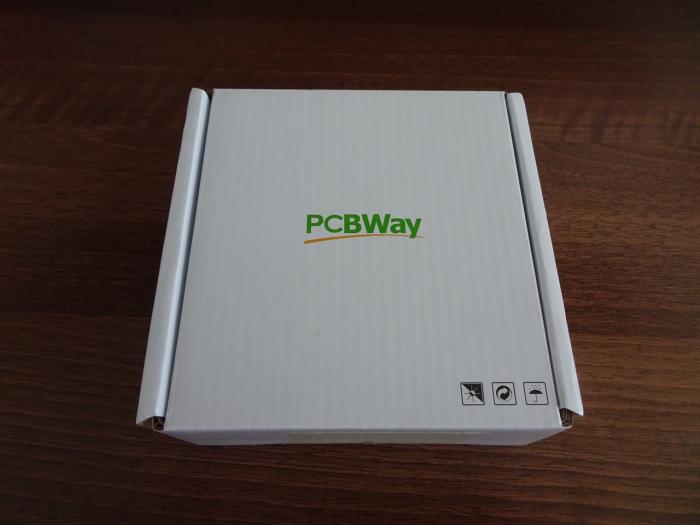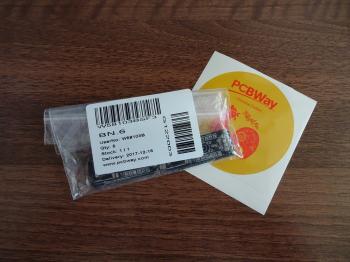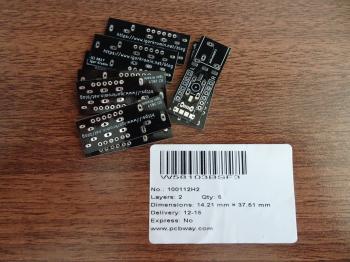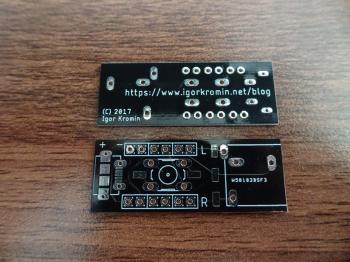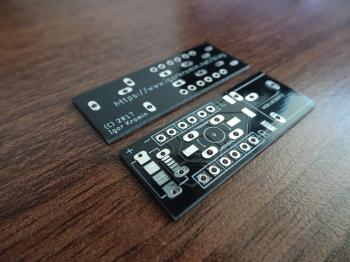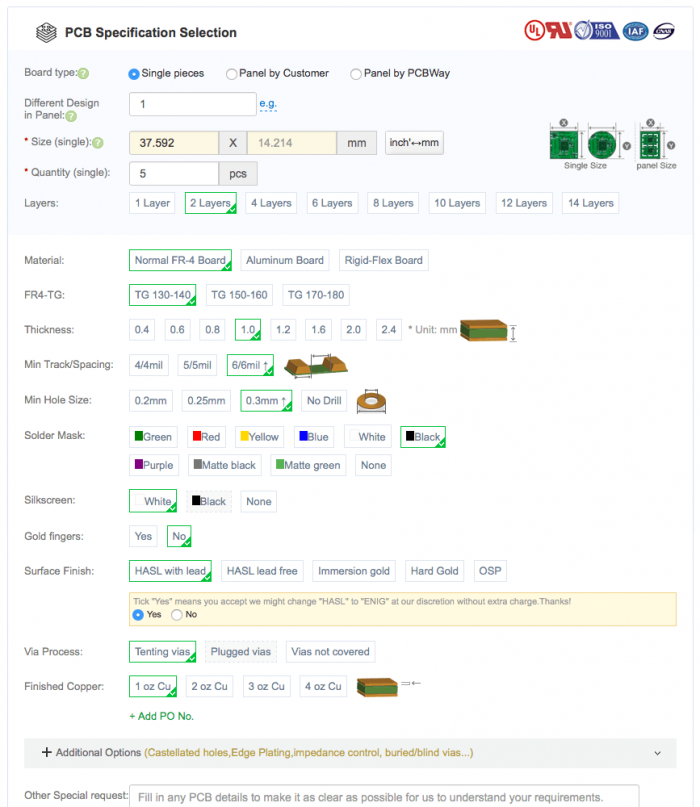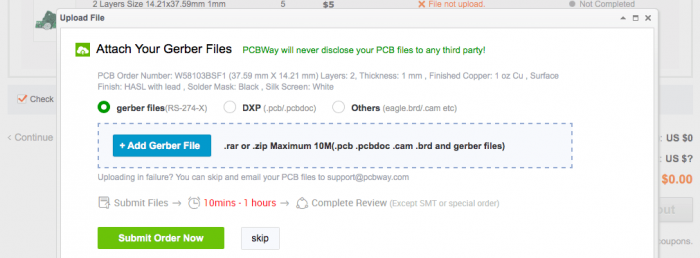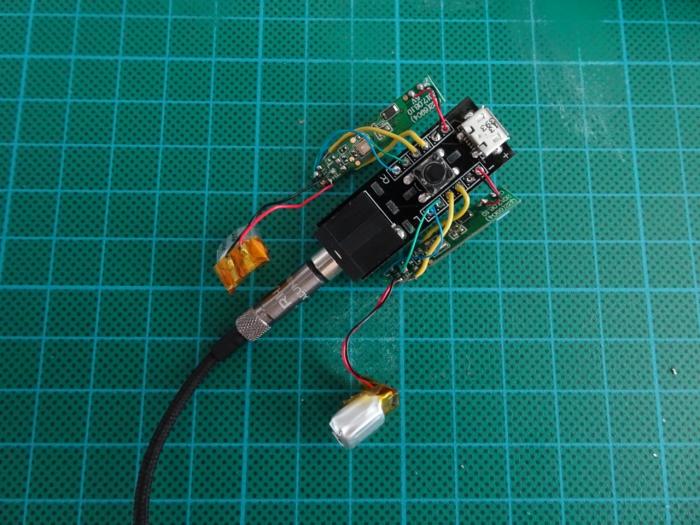PCBWay offers all the usual PCB fabrication services - PCB prototypes, assembly, flexible PCBs but they also offer the creation of SMD stencils which is something I haven't seen on other PCB fabs I've used in the past. I didn't need an SMD stencil for my project (the only SMD component I had was a micro-USB connector) but this was cool to see.
I'll talk about the ordering, payment, shipping and their web site later. First lets see the end product. My boards took about 3 days to manufacture and then another 3 days for delivery (via DHL). It was a very quick turnaround time. When my boards arrived I was surprised to see them packaged in a box...
The surprises didn't stop there. Unlike all the other PCB fabs I've used, PCBWay didn't vacuum seal my PCBs into a blister pack. Instead, the PCBs were in a zip lock bag with the order sticker over it. Again to my surprise I received way more PCBs than I ordered - order was for 5 and I was sent 9.
I was really worried about the SMD pads for the USB header being shorted out due to how little spacing they had between them, but there were no shorts. All pads were perfect. The rest of the traces, drilling, milling and silk screen layer were spot on too. I was quite happy with the quality of the product. The only thing I didn't like was my order number was added to the silk screen.
Here's a short video of the boards...
Now that I've covered the physical product, lets have a look at the web site experience. PCBWay starts out pretty much identical to any other Chinese PCB fab web site. You create a quote by entering in your PCB dimensions, choosing the number of layers, material, thickness, colour, etc. Very stock standard here. The prices vary but are all on the low end. My order came in at $5 for a pack of 5 smallish PCBs.
Then you can upload your PCB files. Gerber is the recommended format but PCBWay will accept others like Eagle .brd files. They don't guarantee that the PCBs will come out as you expect if you use formats other than Gerber however. There are a couple of tutorials on their website and blog to show how to convert Eagle files to Gerber - here and here. I found those tutorials a little hard to follow in some places due to poor translation to English but they did get me there in the end.
Unfortunately there was no Gerber viewer included on the PCBWay web site so there was no easy way to verify your project was converted correctly. I ended up using Online Gerber Viewer for this purpose and had to resubmit my order a couple of times due to issues (like putting my silk screen layer as a copper trace layer, oops!).
Then after submitting my order I was presented with a summary screen like this...
It wouldn't let me pay and the status was 'Subject to audit'. It turns out that someone at PCBWay inspects your uploaded files before they are accepted and before you can pay for the order. That took about 5-10 minutes and then my order was approved and ready to pay for...
However there was a problem here still. For some reason I went back into the Online Gerber Viewer and noticed that the silk screen on the bottom side of the PCB was inverted. That wasn't picked up in the audit, so that's not something I'd be relying on. I quickly fixed this and submitted a new order. There was no way to update an existing order.
After payment my order was off to be fabricated. There was a nice status display at the top of the order page...
In terms of shipping the story here is the same as all the other Chinese PCB fabs. There is the super cheap option with China Post ($7 to ship) that will take between 25 to 40 days. Then there is the express option with DHL ($25 to ship) that will take 3 to 4 days to ship. This part always disappoints me because the boards come in as such a cheap price, typically $5 to $10 and then you have to pay for shipping which ends up driving the price right up.
Overall I quite liked PCBWay and will use them in the future. It does aim for a more processional market than the other PCB fabs I've tried in the past and I think that's a good thing. They're cheap and fast and the quality is really good.
You may be wondering what I built with my boards...well it's this...
I'll have a separate post on this project...which you can read about here: Hacking the HBQ-i7 TWS wireless headphones to make a Stereo Bluetooth Receiver.
Update: I used some left-over PCBs for another project... Adding a micro-USB power socket to an Atari Lynx.
-i
